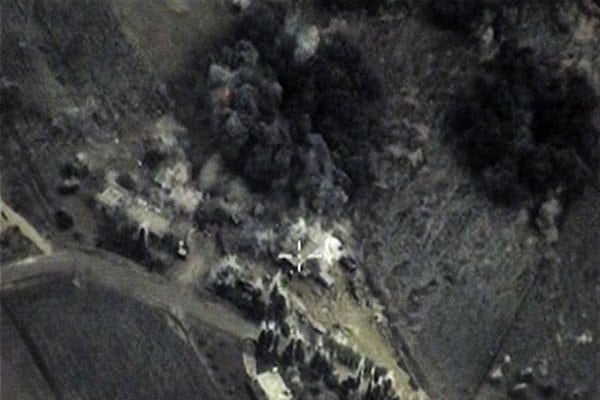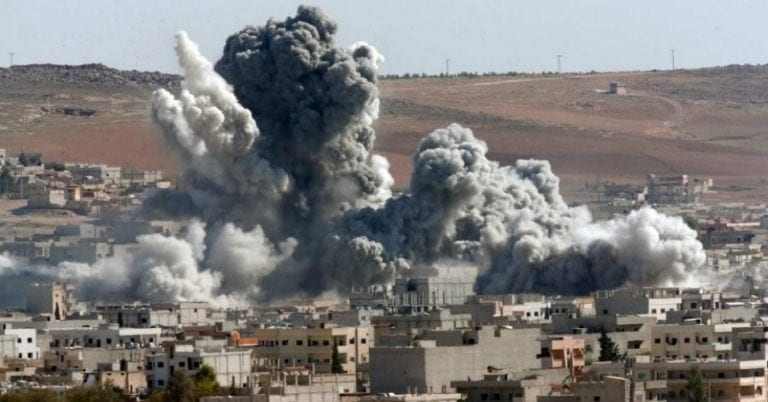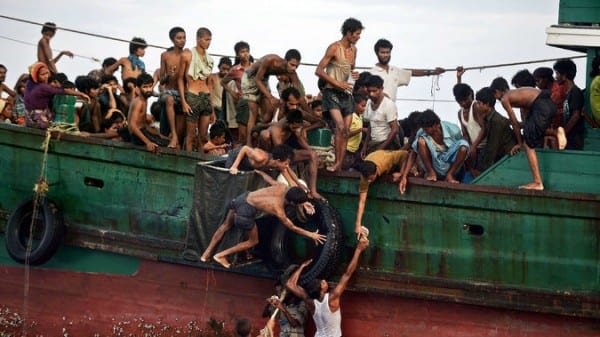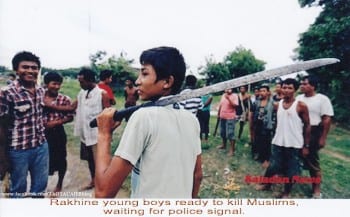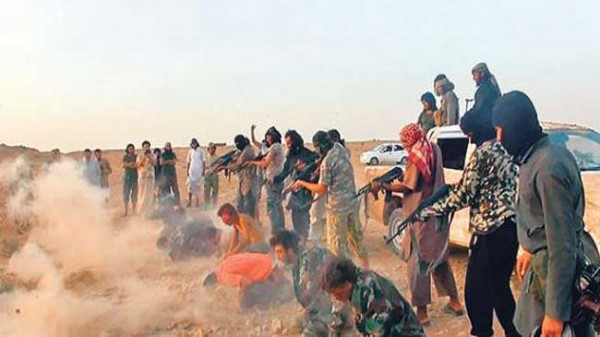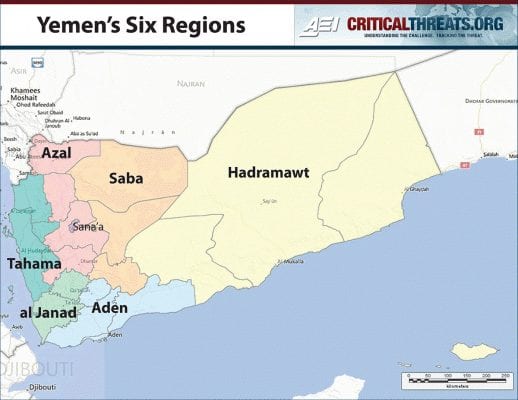The Race For Raqqa And America’s Geopolitical Revenge In “Syraq” (I)
![]()
//
By Andrew KORYBKO (USA) Belatedly, the US is desperately trying to create “facts on the ground” to sustain its drive to “federalize” Syria.
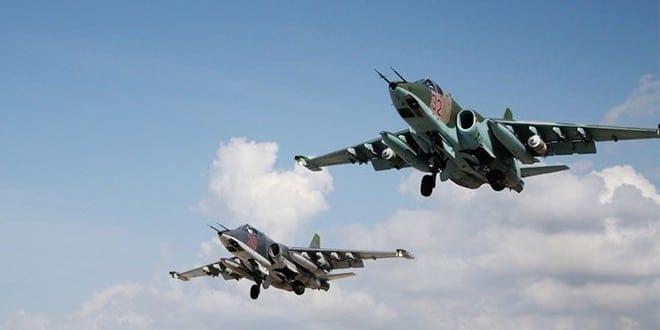
Russian warplanes, in cooperation with the Syrian air force destroyed in the last 48 hours 344 ISIS targets, including 59 command-center, 41 depots, 17 fortified sites and 74 training camps. The sorties also destroyed 3 stores for oil, a factory of explosives, a workshop for mortars and 3 stations for treating oil. The air assault also eliminated nearly 500 tanks loaded with oil for the Islamic State (ISIS).
The Mideast will never be the same again after Russia’s anti-terrorist intervention in Syria. The US’ previously uncontested hegemony over the region is now an unpleasant memory of the past, but it doesn’t mean that it’s totally squeezed from the area just yet. It now appears as though the US is approaching the last step of its ‘geopolitical grief cycle’, having emerged from a complete panic and a pathetic propaganda war to finally enter the planning stages of what’s shaping up to be its counter-response. The airdropping of 50 tons of weapons and equipment to its newly assembled “Democratic Forces of Syria” proxy in the country’s northeast is indicative of its latest strategy.
The US is pressuring its allied units to race to Raqqa “within weeks” under heavy American air support in order to establish ‘facts on the ground’ that could then influence the post-conflict political reconciliation process along the Brookings Institution’s proposed federalization model. If something similar happens along the same time in Iraq’s Sunni-dominated regions, then a semi-institutionalized and largely autonomous trans-border sectarian entity will be created that would kill any hopes for a revival of the Friendship Pipeline between Iran, Iraq, and Syria. Worse still, it could resurrect the Qatar-Turkey gas pipeline to Europe that was one of the reasons for the whole war in the first place, and divide the Russian-led anti-terrorist coalition right down its geographic middle.
Part I speaks on the US’ last-ditch plans to salvage some of its influence in the Mideast, while the second part addresses what Russia and Syria can do to stop it.
American Scheming
[dropcap]T[/dropcap]he US revealed the hand that it’s ready to play, and it involves suddenly shifting the strategic focus to Raqqa and using any gains that its proxies acquire there as a springboard for forcing (de-facto) federalization upon the country.
Laying The Groundwork
As mentioned in the introductory paragraph, the US is pushing its proxies into a heated race for Raqqa (conceptually predicted by the author in August 2014), understanding very well that if it beats the Syrian Arab Army (SAA) in capturing ISIL’s headquarters, then it’ll be the controlling force able to guide any post-conflict political settlement in that region. Therefore, in order to not have its influence in Syria totally expunged by the Coalition of the Righteous (COR), the US is prioritizing this objective over all else, hence the tweaking of its “covert”, off-site training program with the more urgent overt, on-site one. Additionally, it’s expected that the US will refocus its “anti-ISIL” bombings on fulfilling their nominal objective owing to the strategic criticality that it has in finally doing so.
The Race For Raqqa
The rush between the SAA and the “Democratic Forces of Syria” (DFS) to capture Raqqa is eerily reminiscent of the Allied Race for Berlin exactly 70 years ago, complete with both Moscow and Washington approaching the same strategic goal from separate directions (albeit in an indirect manner this time). Just as the Race for Berlin was instrumental in setting the on-the-ground reality that would determine post-war “New Europe”, so too is the Race for Raqqa the main determinant in deciding what the post-war “New Middle East” will look like, which is why the US is in such a frenzy for its supportive forces to seize the city as soon as possible.
Facts on The Ground
“Refugee” Retreat:
Capturing Raqqa might not be enough to solidly put the “DSF” in a position to enforce their American-advised federalization model on the rest of the country, hence the necessity to establish concrete demographic facts on the ground that could facilitate this. There are a couple of scenarios for how this could come about, but one of the most likely deals with the scores of retreating jihadists, squeezed between ever-tightening Turkish and Jordanian border security, fleeing east to make an ostensible final stand with their fellow terrorists-in-arms in the un-“Islamic State’s” ‘capital’. Bringing with them countless human shields (which would be positively referred to by the Western mainstream media as “Sunni refugees”), they’d be able to largely stave off Russian airstrikes at the same time as enacting a massive demographic transformation, all with a wink and a nod from the US.
Strategic Surrender:
So long as America’s proxies capture Raqqa first, then these “Sunni refugees” and their terrorist hostage takers could ‘surrender’ to them instead of to the SAA, the effect of which would be historically similar to retreating Nazis surrendering to the US so as not to fall into Soviet hands. Unlike the USSR which was an actual internationally recognized entity, the “DSF” are legally unrecognized (for now), but by having a mass surrender and “refugee” transfer strategically land in the palm of their hands, they’d de-facto become the on-the-ground ‘authority’ in that part of the country. This in turn would further the federalization plan that they have, and cheering it all along would be the Western mainstream media.
Info Wars:
[dropcap]J[/dropcap]ust as they slandered the Soviet Army as being ‘barbaric communists’ during World War II and thus ‘justified’ as many last-minute Nazi surrenders to the West as possible, they’ll continue doing the same thing that they’ve already been doing for over four years with the SAA, alleging that it’s an ‘illegitimate’ and ‘barbaric’ entity that has no right to receive surrendering terrorists or freed hostages. The end effect will be the same – the genuine liberating force in the war (the Soviet Army and SAA) is made to look like the bad guys, while the real bad guys (Nazis and Wahhabis) are presented as ‘victims’ of the liberators and garner Western sympathy for that exact reason. One must keep in mind that both situations are examples of high-level information warfare meant to achieve specific geopolitical goals on behalf of the US, and the historical lesson from the end of World War II is being repeated theme-for-theme as the War on Syria rapidly draws towards its end-game conclusion.
Conditionals
Synchronized Surrender In Iraq:
The US’ new strategy is dependent on a few factors, the first of which is that ISIL, if it does in fact surrender to the “DSF”, publicly proclaims that it did so in order to promote a ‘political settlement’ that would give the territory a level of autonomy on par with or even exceeding that of the Kurdish Regional Government in Iraq. Likewise, something similar must happen around the same timeframe in Iraq’s Anbar Province (and potentially even Nineveh) so that a sub-national trans-border Sunni entity can be forged between it and east-of-the-Euphrates portions of Syria’s Ar-Raqqah, Al-Hasakah, and Deir ez-Zor Governorates. This is the only way that the terrorists’ military defeat could be partly transformed into an economic-strategic ‘victory’ for the US as per the de-facto creation of a pro-American satellite in the heart of the Mideast, strengthened by its geographic contiguity to Saudi Arabia and enriched by the Qatar-Turkey gas pipeline that will run through it.

SAA fighters—the little credited Syrian Arab Army, one of the bravest and most resilient forces fighting ISIS. The SAA have confronted impossible odds, and stood their ground.
…
Kurdish-Arab Post-War Amity:
Assuming the unfortunate scenario where the US gets close enough to actualize this stratagem, its vision could still crumble at the last minute if there’s a Kurdish-Arab post-war fallout within the “DSF”. After all, the main components of this militant umbrella are the Kurdish YPG militia and the “Syrian Arab Coalition”, and it’s foreseeable that they may differ about the post-war allocation of territory within the proposed federal structure that the US would be promoting. The US, Turkey, and the Gulf States would find it absolutely unacceptable for the Qatar-Turkey gas pipeline to go through Kurdish-controlled territory, thus meaning that the “Syrian Arab Coalition” would have to find some sort of ‘accommodation’ with the Kurds to remove them from the northern reaches of Ar-Raqqah Governorate or ensure that this territory doesn’t fall under the jurisdiction of any forthcoming Kurdish sub-national entity. Since the Kurds are not expected to abandon the territory that they’re both inhabiting and militarily operating out of, the “Syrian Arab Coalition” may be directed by the US, Turkey, and others to resort to terroristic genocide against them so as to ethnically cleanse the Kurds from this strategic pipeline corridor. The resulting internecine bloodbath might open up the door for a COR counter-offensive that would spell the final end to the US’ Mideast proxy equivalent of the “Battle of the Bulge”.
 (Click on image for best resolution.)
(Click on image for best resolution.)
 Andrew Korybko is an American political commentator currently working for the Sputnik agency. Hamsa Haddad is a Syrian researcher based in Moscow.
Andrew Korybko is an American political commentator currently working for the Sputnik agency. Hamsa Haddad is a Syrian researcher based in Moscow.
Note to Commenters
Due to severe hacking attacks in the recent past that brought our site down for up to 11 days with considerable loss of circulation, we exercise extreme caution in the comments we publish, as the comment box has been one of the main arteries to inject malicious code. Because of that comments may not appear immediately, but rest assured that if you are a legitimate commenter your opinion will be published within 24 hours. If your comment fails to appear, and you wish to reach us directly, send us a mail at: editor@greanvillepost.com
We apologize for this inconvenience.
![]() Nauseated by the
Nauseated by the
vile corporate media?
Had enough of their lies, escapism,
omissions and relentless manipulation?
Send a donation to
The Greanville Post–or
But be sure to support YOUR media.
If you don’t, who will?
